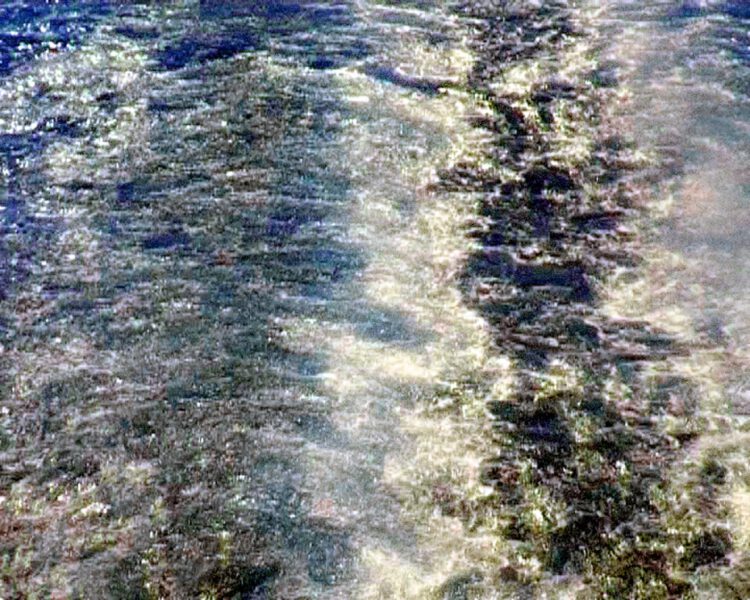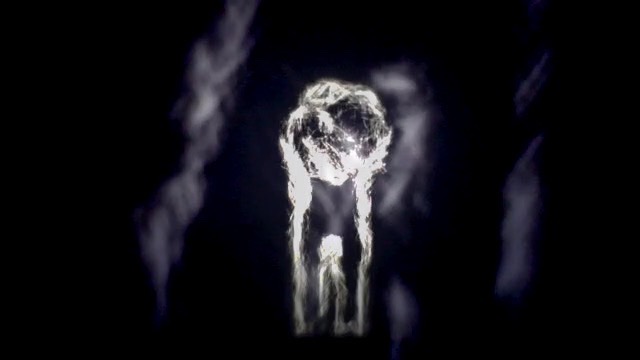
Speed Manipulation by Daniela Butsch
In this videopiece Daniela Butsch shows a shot of the stern of a ferryboat with the original sounds of the engine and the dispersing water. Recorded sound and the wash of waves are originating from the same energy source, the marine propellers, but are transmitted from different consistencies: air and water. Butsch lets the oscillation of these transmitting media move from different accelerations and decelerations and achieves an astonishing intensity with this minimalistic chronological stylization.
Without reference to proportion and prospective the spatial depth is intentionally decreased and twodimensionality of Butsch’s “electronic painting” is strengthened. The dynamic of disturbance of the water churned up by the marine propellers causes zones of differrent reflections, refractions and filterings of light along the waterway and results in a vertical color-coordinated structure of the painting in anthracite and turquoise tones, pervaded by the white of the spray.
A satisfying floating colour composition turns suddenly into an extremely accelerated acoustic-visual process and vice versa. Picture and sound, which sometimes reminds one of a television with interference and with which Butsch tears the viewer out of inviting meditation and refers back to the technical qualities of her design process.
After an introduction into the spectrum of deformations of time Butsch finishes the sequences with a triple cut of an increasing deceleration. The sound as the most sensitive indicator of the play-back tempo/speed ranges from a deep-frequent noise over a noise at the boundary of the frequency response to the acoustic noise converters and then pitches down into the inaudible range of subsonic noise. In doing so the dispersing water coagulates to an apparent standstill. Like a rockformation, which only changes in geological periods, the achieved condition of aggregation is illusionary. With the previous introduction into the chronological designing process Butsch succeeds with this decisive final sequence in making an conceptual treasure: the potentialities of our perceptive intuition are limited, we can’t apprehend the extremely decelerated change, but we know about it. A knowledge of great wealth of association, it suggests the ability of forming changes, which extend the human horizon of time and perception.
Anke Taryn Schuster, art historian
